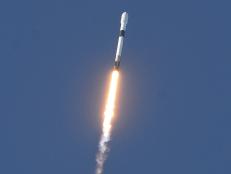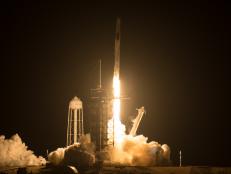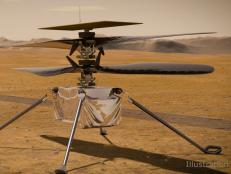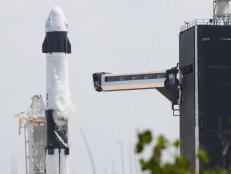All Space Articles
Showing 46 - 60 of 491 results
Liftoff of Blue Origin’s New Shepard NS-14 Scheduled for January 14
Blue Origin will attempt its next test flight of New Shepard on January 14 at 10:45A ET from Launch Site One in West Texas. Let’s learn more about Mission NS-14.
South Korea Joins Space Race by Sending its First Spacecraft to the Moon
South Korea is launching its first lunar probe to the moon on August 4th. The Korea Pathfinder Lunar Orbiter (KPLO) or Danuri, developed by the Korea Aerospace Research Institute (KARI) is being launched to study moon carters, magnetic fields, and surface weathering.
Liftoff of NASA and SpaceX Crew-2!
The NASA and SpaceX Crew-2 mission launched on Friday, April 23 at 5:49A ET from the NASA Launch Complex 39A. This historic milestone marks the second operational mission of SpaceX’s Crew Dragon. Onboard was NASA astronaut Shane Kimbrough, NASA astronaut Megan McArthur, ESA astronaut Thomas Pesquet, and JAXA astronaut Akihiko Hoshide. After a 23-hour journey, Crew-2 successfully docked with the International Space Station (ISS) on April 24 at 5:08A ET. Here's everything that happened from launch day to the Crew-2's arrival at the ISS. (Updated April 24, 2021)
Meet Ingenuity: NASA’s First Mars Helicopter
Perseverance with Ingenuity strapped to its belly launched on July 30, 2020, from Cape Canaveral Air Force Station in Florida. The Mars Rover and Mars Helicopter safely landed on the dusty surface at 3:55P ET on February 18, 2021, after traveling nearly 292.5 million miles.
Celebrating 20 Years of Food in Space on the ISS
This year marks the 20th anniversary of continuous human presence aboard the International Space Station. Do you ever wonder what the astronauts have been eating for the past 20 years in zero gravity? Let’s find out!
Watch NASA Astronauts Return Home Live on Aug 2
NASA Astronauts Bob Behnken and Doug Hurley are scheduled to arrive home from space on Sunday, August 2. Watch SPACE LAUNCH LIVE: SPLASHDOWN on Discovery and Science Channel starting at 1PM ET.
Why Charting the Most Extreme Objects in the Solar System Matters
So the astronomers called it “FarFarOut”, which is mostly a joke because the last time they found such a distant object it they nicknamed it “FarOut”, and this new world is much, much, farther out.
The 5 Greatest Robotic Space Explorers
Our little silicon friends have been exploring the harshest environments in the universe - space itself - in humanity’s name for decades. And while tales of their robotic exploits could fill an entire book, let’s count down the top five.
Out of This World! Inside Virgin Galactic's Spacecraft
Buckle up! On July 28, Virgin Galactic is showing the world what the inside of their SpaceShipTwo Unity spacecraft looks like via a livestream on their YouTube channel.
Countdown To Launch: NASA and SpaceX Crew-1 Mission
After a successful NASA and SpaceX Demo-2 Mission, the first operational mission of SpaceX’s Crew Dragon with four astronauts is targeted for November 15, 2020. Get ready to launch! Watch it live on SPACE LAUNCH LIVE: CREW-1 LIFT OFF starting at 5P ET on Discovery and Science Channcel or stream it live on Discovery GO.
World Space Week: Satellites Improve Life
World Space Week is an annual event around the globe and observed in over 90 countries. The theme of this year’s celebration is “Satellites Improve Life.” Let’s take a look back at the early history of satellite launches!
It’s Time to Return to the Land of the Ice Giants
30 years--It’s been over 30 years since the Voyager 2’s historic flyby of Uranus and Neptune, the outermost and most mysterious planets in the solar system. It’s time to go back.
Let’s Look for Water on the Moon
NASA is headed to the moon, but this time it's in search of water. Astrophysicist Paul M Sutter shares what this means and why it's important.
Looking Down: NASA Astronauts Share Images from Space
From "Space Selfies" and birthday celebrations, to beautiful images of Earth, NASA Astronauts Bob Behnken and Doug Hurley shared tons content while up at the International Space Station.
Red Rover, Red Rover, Send Perseverance Right Over
A few years ago, after the successful deployment of the Curiosity rover on Mars, the folks at NASA envisioned a bold new plan to send another mission to the red planet. The mission was scheduled to depart in the then-futuristic year of 2020.


























